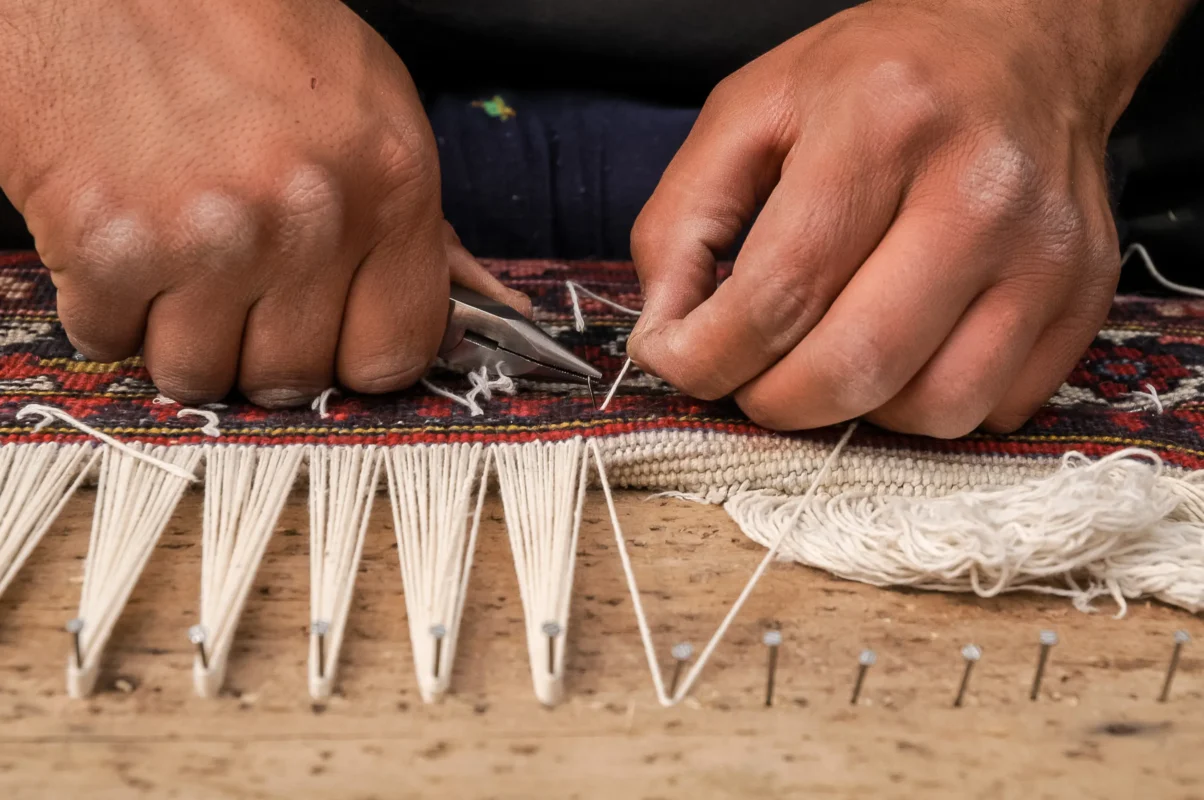Handmade vs Machine-Made Rugs: How to Spot the Difference
In this blog post, we’ll guide you through the key differences between handmade and machine-made rugs, how to spot authenticity, and why choosing the right one matters — especially when shopping for premium rugs at Shabahang Rugs
Handmade vs Machine-Made Rugs: How to Spot the Difference
Buying a rug is not just about style — it’s an investment in quality, craftsmanship, and culture. One of the most common questions rug buyers ask is: “Is this rug handmade or machine-made?” Knowing the answer can make a huge difference in both the price and long-term value of your purchase.

What Is a Handmade Rug?
Handmade rugs are individually knotted or woven by skilled artisans, often taking months or even years to complete. They’re typically made using natural fibers like wool, silk, or cotton, and showcase traditional designs rooted in history and culture — especially in Persian and Oriental styles.
Key Features of Handmade Rugs:
- Visible knots on the back
- Slight imperfections due to the human touch
- Natural materials like wool, silk, or cotton
- Durable and long-lasting — often passed down for generations
What Is a Machine-Made Rug?
Machine-made rugs are produced in factories using power looms and synthetic materials like polyester, acrylic, or nylon. These rugs are quicker to make, more affordable, and often have a uniform appearance — but they usually lack the authenticity and longevity of handmade options.
Key Features of Machine-Made Rugs:
- Perfectly uniform design and edges
- Synthetic materials used for affordability
- Shorter lifespan (typically 5–10 years)
- No real cultural or investment value
Handmade vs Machine-Made Rugs: 5 Key Differences
Feature | Handmade Rugs | Machine-Made Rugs |
Crafting Process | Individually hand-knotted | Loomed by machines |
Material Quality | Natural (wool, silk, cotton) | Often synthetic (nylon, polyester) |
Back of Rug | Uneven, visible knots | Uniform, often grid-like backing |
Lifespan | 30–100+ years | 5–10 years |
Value | Appreciates with time | Depreciates rapidly |
Why Handmade Rugs Hold More Value
Handmade rugs are timeless. Not only do they last longer, but their artistry and cultural significance make them more desirable to collectors and homeowners alike. A hand-knotted Persian rug from Shabahang Rugs can be a family heirloom, a design centerpiece, and a smart investment — all in one.
How to Identify a Handmade Rug: Quick Tips
- Flip the Rug Over: Handmade rugs show knots and slight imperfections on the back.
- Feel the Texture: Natural fibers feel warmer and softer than synthetic ones.
- Check the Fringes: On handmade rugs, fringes are part of the foundation — not sewn on.
- Ask About Origin: Authentic handmade rugs often come from Iran, Turkey, Afghanistan, or India.
- Seek Certification: Reputable sellers like Shabahang Rugs provide authenticity certificates.
Why Buy from Shabahang Rugs?
At Shabahang Rugs, we pride ourselves on offering authentic, handmade Persian and Oriental rugs sourced directly from expert weavers. Every rug in our collection:
- Is 100% hand-knotted
- Comes with origin and quality documentation
- Is selected for design, material, and craftsmanship
With decades of experience and a passion for preserving rug heritage, we help customers invest in art pieces that tell a story.
FAQs
Q: Are handmade rugs worth the higher price?
A: Yes. Handmade rugs offer unmatched quality, durability, and cultural value. Over time, they can even appreciate in worth.
Q: Can a machine-made rug look like a handmade one?
A: While some machine-made rugs mimic traditional designs, they lack the unique character, texture, and longevity of handmade versions.
Q: How long does a handmade rug last?
A: With proper care, a handmade rug can last 50 to 100 years or more.
Q: Is it possible to repair a handmade rug?
A: Yes. Handmade rugs can often be restored by professionals — especially high-quality Persian rugs.
Q: Does Shabahang Rugs sell machine-made rugs?
A: No. We specialize exclusively in authentic handmade rugs crafted with care, history, and tradition.
Related Posts
Top Interior Design Tips for Decorating with Oriental Rugs
-
Posted by
 Ans Iqbal
Ans Iqbal - 0 comments
What Makes a Quality Rug Restoration? 3 Key Factors You Should Know
-
Posted by
 dan
dan - 0 comments
